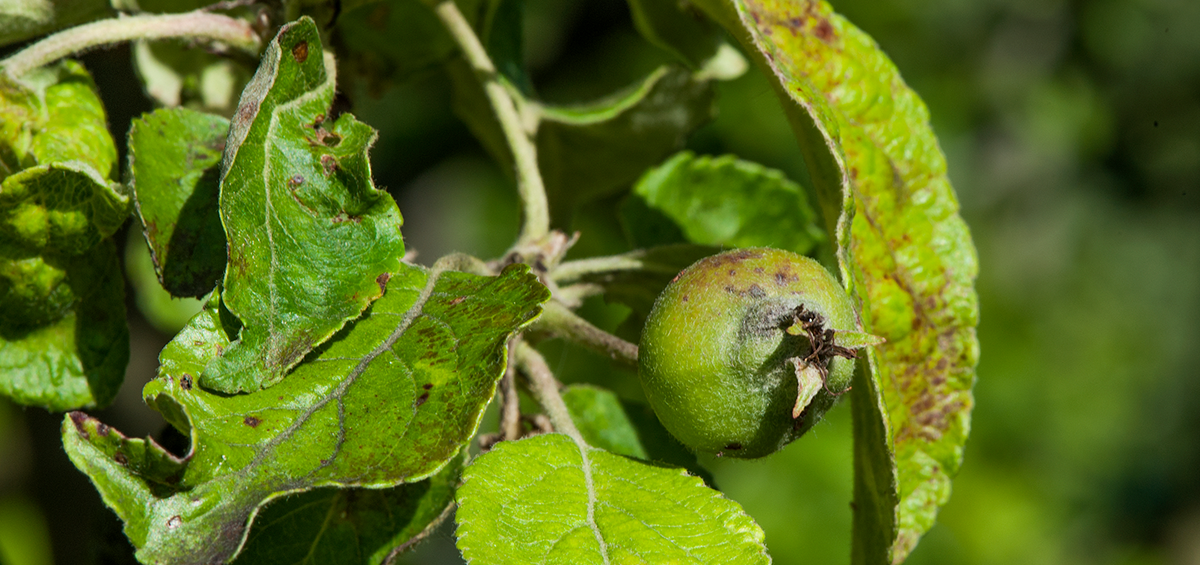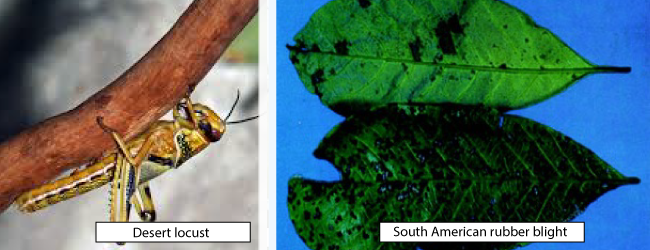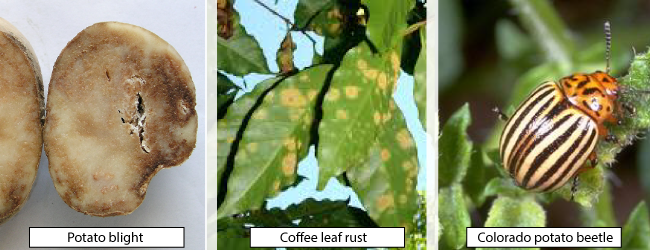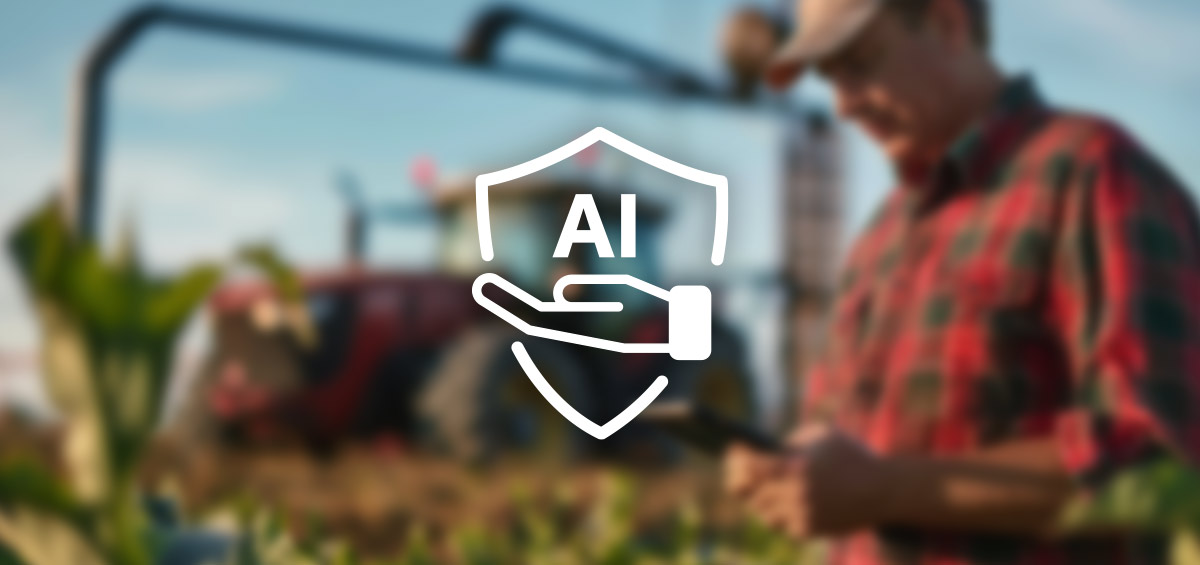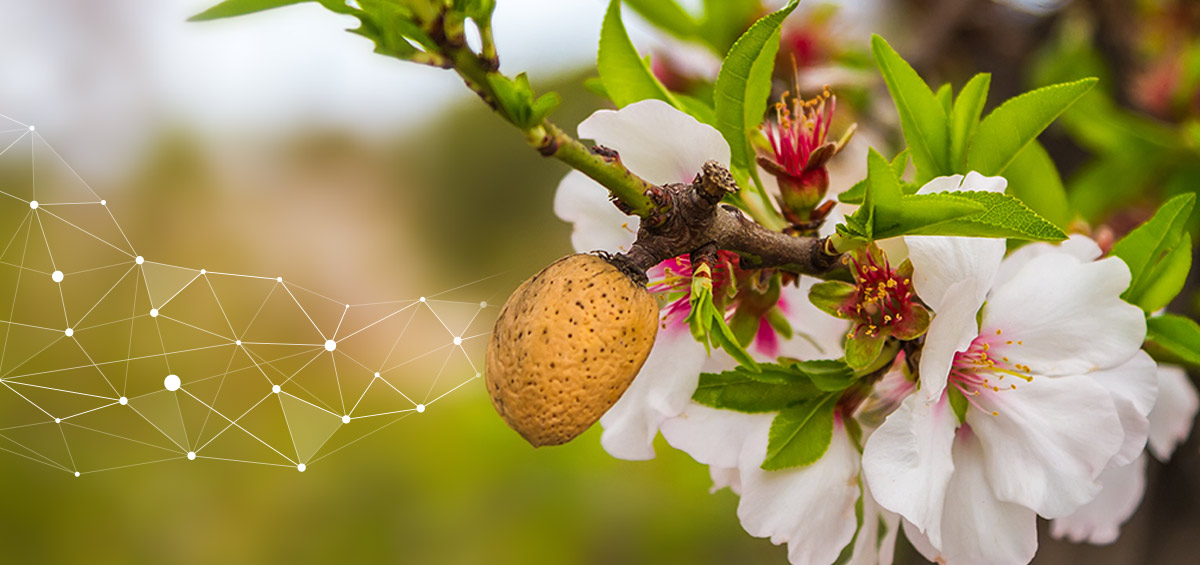How Bad Is The Pest Problem?
For farmers worldwide, pests already are a serious problem. They are responsible for the loss of 10 -16 % and more of all crops during production and result in further losses after harvest i.e. due to infestations in food stores. From microscopic fungi, bacteria and viruses to insects and other animals, there are numerous different species which affect everyday staples like cereals, potatoes, fruit and vegetables. These pests have evolved to breed quickly and disperse easily, allowing them to move readily to find new hosts. There is immense range of pests and diseases that threaten agricultural crops and that can be sorted into categories according to the damage they cause or means of control:
Worst historical pest
- The desert locust (Schistocerca gregaria L.), a pest since biblical times, they strip a field bare in an hour and consume a very wide range of crops
- Witches’ broom disease of cocoa (Crinipellis perniciosa), introduced in Brazil by humans due to the weakening of the political power of the powerful cocoa landowners. Production across the region fell 75%. Brazil went from being the world’s third-leading cocoa producer to 13th place.
Hardest pest to control
- South American rubber blight (Microcyclus ulei), which causes the fungus and makes rubber tree production in South America impossible. It notoriously defeated Henry Ford’s attempts to grow rubber for car tires in the eponymous Fordlandia, Brazil, losing him an investment of $250m
- Coffee wilt disease (Fusarium xylarioides), which spreads insidiously through the soil and on machetes used to prune the trees. The only way to halt it is a scorched-earth policy of pulling up all trees in infected plots and then waiting a year before replanting – plus another four years until you get a full harvest again.
Most expensive pest to control
- Western corn rootworm (Diabrotica virgifera virgifera L.), in terms of a number of pesticides once used to control this pest and the expense of developing a resistant strain, this beetle is a strong contender
- Potato blight (Phytophthora infestans), the fungus caused the Irish potato famine (1845-1852), during which one million people died and a further million emigrated from Ireland, causing the population to decrease by about 24%
- Coffee leaf rust (Hemilaea vastatrix), a fungus that devastated coffee production in Sri Lanka (Ceylon) in the 19th Century and famously led to a switch to tea drinking in the UK.
Worst stored product pest
- The Khapra beetle (Trogoderma granarium L.) is difficult to control because it feeds on a variety of dried materials. It is resistant to insecticides and can go long periods without food. Infestations can result in up to 70% grain damage, making products inedible and unmarketable.
Worst climate change threat
- Mountain pine beetle (Dendroctonus ponderosae L.) has killed 13 million hectares of lodgepole pine forest in British Columbia, Canada. Generally, climate change is likely to mean that many wood-boring pests of cold northern climes will become more destructive since higher temperatures will increase winter survival and possibly enable an extra generation in the summer.
Most resilient pest
- Colorado potato beetle (Leptinotarsa decemlineata L.), for over 50 years manages to develop resistance to 52 different compounds.
Next Steps for Managing Plant Pests
At any one time, because of weather conditions, mutation to a virulent form, or the emergence of resistance to chemical control, a pest will surge into prominence unexpectedly. What farmers need, is better monitoring and recording of pests in order to take early action, using pest alarms of AGRIVI farm management system. According to weather conditions on your fields, the system alerts you 7 days in advance about possible pest and/or disease for all crops you grow. You have enough time to prepare biological or chemical agents for crop protection. Even after food is grown, stored and transported, serious losses can occur. And when some food is lost it’s not just the food that is wasted – it’s percentage of the land, water, labor, seed, pesticide and fertilizer – so a financial and environmental loss too.
Track weather conditions in AGRIVI system and take care of global food security.
Text source: BBC || Springer Link || Global Food Security|| Carbon Brief
